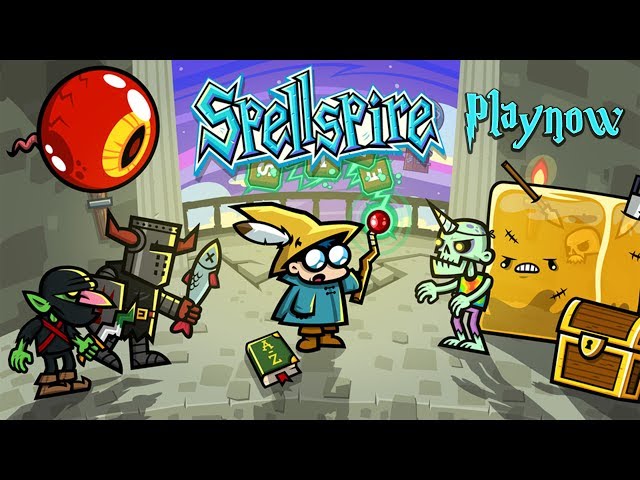In the pantheon of action sports, few names resonate with the same force and legacy as Dave Mirra. He wasn’t just a BMX rider; he was an architect of possibility, a pioneer who pushed the boundaries of gravity and redefined what could be achieved on two wheels. The “Dave Mirra Phenomenon” refers not only to his staggering collection of medals or his mainstream appeal but to the complex, high-performance system of innovation, resilience, and relentless progression he embodied. To truly understand this phenomenon, it’s helpful to view his life and career through an unconventional lens: the world of software debugging. Like a master developer building a revolutionary application, Mirra was constantly writing, testing, and refining his own code. He engaged in a perpetual cycle of code debugging, where every crash was a bug, every landed trick a successful deployment, and every competition a stress test. This article will deconstruct the Dave Mirra phenomenon by applying the principles of full stack debugging, from the polished user interface of his public persona to the complex backend processes that powered his genius and, ultimately, to the tragic system crash that we are still trying to comprehend.
The Core Architecture: Innovation as an Operating System
At its core, Dave Mirra’s success was built on a revolutionary operating system—a unique combination of raw athletic talent, fearless creativity, and an analytical mindset. He didn’t just execute tricks; he engineered them. This process mirrors the structured approach of modern software development, where rigorous testing and iteration are paramount. For Mirra, the skatepark was his integrated development environment (IDE), and his body was the framework executing increasingly complex code.
The Development and Deployment Cycle of a Legend
Every groundbreaking trick Mirra landed, from the double backflip to the 360 no-handed backflip, was the result of a meticulous development cycle. This process involved:
- Requirement Analysis: Identifying the next frontier in BMX and conceptualizing a trick that didn’t yet exist.
- Prototyping: Experimenting with movements into a foam pit, much like a developer uses a staging environment to test new features.
- Unit Testing and Debugging: Attempting the trick on a resi ramp or dirt, where each failure provided critical data. This was his form of unit test debugging. A failed rotation or a misplaced hand was an “error message” that required immediate analysis. He had to perform a mental stack trace to understand the sequence of events that led to the crash.
- Deployment: Successfully landing the trick in a competition, deploying it to the “production” environment of the X Games.
This iterative loop of testing and debugging was fundamental. Whether you are engaged in JavaScript development, Node.js development, or Python development, the principle is the same: you build, you test, you find errors, and you refine. Mirra was a master of this, using sophisticated debugging techniques to perfect his craft.
The Ultimate Debug Console: A Champion’s Mindset

Mirra’s most powerful debug tool was his own mind. He possessed an uncanny ability to process failure not as a setback but as a solvable problem. When a line didn’t work or a trick failed, he didn’t just try again; he entered a state of intense code analysis. He would pause, visualize, and mentally step through the execution frame by frame. This internal debug console allowed him to tweak variables—speed, takeoff angle, body position—with the precision of a programmer adjusting parameters. This methodical approach to bug fixing separated him from his peers and allowed him to operate at a level of consistency and innovation that was simply phenomenal.
A Full-Stack Analysis: Frontend Charisma and Backend Complexity
The Dave Mirra phenomenon was a full-stack operation. There was the public-facing “frontend”—the charismatic, dominant champion—and the private “backend” that powered it all, complete with its own complex logic, dependencies, and vulnerabilities. A comprehensive understanding requires both frontend debugging and backend debugging.
Frontend Debugging: The “Miracle Boy” Brand
To the world, Dave Mirra was “Miracle Boy,” a flawless application with a perfect user interface. His X Games dominance, popular video game series (Dave Mirra Freestyle BMX), and role as host of MTV’s Real World/Road Rules Challenge created a polished and accessible brand. This was the frontend, meticulously crafted and presented to millions. From a web debugging perspective, his public persona was flawless. There were no visible JavaScript errors or broken layouts. He was the epitome of success, a perfectly rendered component in the action sports landscape. This required constant maintenance, much like React debugging or Angular debugging ensures a modern web app remains seamless for the user.
Backend Debugging: The Unseen Engine of Pressure and Pain
Behind the polished frontend was a complex backend system running under immense load. The pressures of staying at the top, managing business ventures, and dealing with the brutal physical toll of the sport were the server-side processes hidden from the user. This is where the real application debugging took place.
- API Debugging: Mirra had to manage countless interfaces—with sponsors, media, family, and competitors. Each of these “APIs” required careful handling to ensure the entire system ran smoothly.
- Logging and Debugging: Every crash, every broken bone, and every concussion was an error logged by his body. While he was a master at recovering, these logs were not ephemeral. They accumulated over time, creating a history of system stress that would eventually have consequences. Effective error tracking is crucial in software, and in retrospect, the sports world lacked the tools to monitor these critical physical errors.
- Database Integrity: His core drive, memories, and motivations formed his “database.” Maintaining the integrity of this database while under constant physical and mental assault was a monumental task.
This backend complexity extended to his transition into rallycross, a move akin to migrating a massive application to a new framework, like moving from Express debugging to Django debugging. It required learning a new language, new tools, and new methods for system debugging.

When the System Crashes: Performance, Memory, and the Final Stack Trace
The most tragic chapter of the Dave Mirra phenomenon is his death by suicide in 2016. In our debugging metaphor, this was a catastrophic system failure. Post-mortem analysis revealed he was suffering from Chronic Traumatic Encephalopathy (CTE), a neurodegenerative disease caused by repeated head trauma. This discovery provides a framework for understanding the system’s breakdown, akin to advanced production debugging.
Performance and Memory Debugging: The Impact of CTE
CTE can be understood as a severe hardware-level bug, a form of corrupted memory that degrades system performance over time. It is the ultimate challenge in memory debugging. The repeated concussions Mirra sustained were like memory leaks, small issues that, over time, consumed system resources and led to instability. The symptoms of CTE—depression, memory loss, and erratic behavior—are the functional equivalent of an application becoming slow, unresponsive, and throwing unexpected exceptions. This wasn’t a simple logical error that could be fixed with a code patch; it was a fundamental flaw in the underlying architecture, invisible without specialized profiling tools like a post-mortem brain analysis.
Async Debugging and Unseen Processes

Mental health struggles are notoriously difficult to diagnose and treat, much like the challenges of async debugging. The problem often lies in a background process that doesn’t immediately affect the main execution thread. The root cause isn’t visible in the console, and the application may appear to be functioning normally until it suddenly hangs or crashes. Mirra’s internal battle was an asynchronous operation running in the background. Without proper error monitoring and tools designed to inspect these hidden processes, the system was vulnerable to a fatal exception. This highlights a critical need for better mental health diagnostics and support, the human equivalent of advanced developer tools and debug libraries.
The Final Stack Trace: Understanding the Unthinkable
A stack trace in programming shows the sequence of function calls that led to an error. While it can never fully explain the “why” of a human tragedy, we can look back at the sequence of events in Mirra’s life as a form of stack trace. The countless concussions, the immense pressure of being a global icon, the difficult transition away from the sport that defined him—each of these was a call on the stack. This is not about assigning blame but about understanding the cascade of events. It’s a lesson in the importance of holistic system debugging, recognizing that in complex systems like a human life, especially one lived at the extremes, seemingly isolated events are often interconnected. This kind of analysis is vital, whether you’re engaged in microservices debugging or trying to understand human health.
Conclusion: The Legacy of a Phenomenon
The Dave Mirra Phenomenon is a story of unparalleled achievement, relentless innovation, and profound humanity. Viewing his journey through the lens of software debugging allows us to appreciate the intricate architecture of his genius and the immense pressures his system endured. He was a master of bug fixing in his sport, turning failures into fuel for progression. However, his story is also a tragic reminder that some of the most critical bugs are not in the code we write but in the hardware it runs on, and in the silent, asynchronous processes we can’t easily see. His legacy compels us to develop better debugging best practices—not just for our software, but for our athletes and for ourselves. It underscores the urgent need for better performance monitoring and error tracking for mental and neurological health, ensuring that the systems we rely on, both digital and human, are resilient, supported, and understood.












